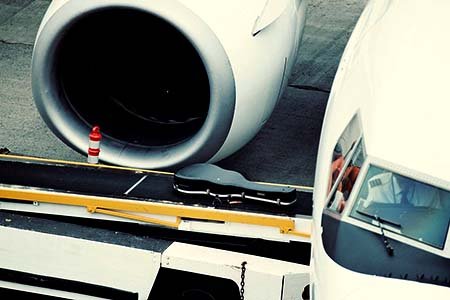As a guitarist, we are proud and passionate about the instrument that we cannot think of a day without it. Some working musicians have no alternatives to carry it. Wherever we go, we like to play often, practice our favorite tunes. Like many other instruments, guitars are undeniably fragile. There are always risks involved while traveling with a guitar. If somehow the guitar gets damaged, we know how expensive it is to fix or replace it, think about the memories attached to it during gigs, playing with friends, or in a campfire. The following tips and tricks will help save your favorite guitar. So, help yourself.
7 Must-Know Tips For Traveling with a Guitar
01. Invest in a quality guitar case
First thing first, a hard-shell case is a must-have if you are considering traveling with the instrument the very next time. Guitar, like any other instrument, is fragile. While in travel, sudden fall, bumps and bruises, and dings are prevalent phenomena. The durable exterior of a hard-shell case, protective foam padding with plush lining can save you guitar, especially on long tours. You can pick your gig bags only when short trips or covering short distances. For long trips with the change of transportation or in flights, a best flight guitar case can protect your guitar like no other.
What usually happens as a newbie owning a guitar for the first time, saving some bucks, becomes a priority, and opt for a cheap soft bag. However, if you are into rigorous travel and planning to carry your precious instrument with you, a hard-shell case is what you need.

02. Loosen the string
The best thing you can do to prepare for traveling is to lose up the strings to handle any changes in pressure. If you do not lose the strings in, as a result, the neck might fracture. Also, due to airline policy, who knows, your guitar may be checked in as baggage. Somehow your guitar as baggage is subject to excessive pressure; your guitar may damage. Loosen the strings might save you from such disaster.
03. Stuff your guitar case
You can stuff anything; we recommend using bubble wrap only to avoid unnecessary guitar movement in the bag. Why bubble wrap? It’s a top-notch shock absorber, thin and affordable. You want it light so that you can spread it around the corner without significantly expanding the desired case size. How to? Place a layer of the wrap, then position your guitar in the case. Please leave a little space to ensure it’s not too tight on the guitar case to avoid unwanted pressure. Then place another layer of bubble wrap. Alternately, wrap around with a single large sheet or other things such as old clothing. Make sure that you don’t use anything to stuff that might damage your guitar. Again, we recommend using bubble wrap.
04. Mind your accessories
Sometimes, we are probably a bit too excited about the gig or the people we will meet and tend to stuff everything about the guitar within the case. If we do such instances, the chances of damaging the instrument get increased. Keep your extra strings, picks, and capo, in the separate accessories compartment. Consider taking a different set of every accessory you have so that you need to worry about anything. Where should you carry these? Inside the guitar cabin of the case!!! NEVER do that. Check your guitar case; it has a separate accessories compartment to carry everything you need. Most accessory compartments have enough space inside, considering what you need to bring while on the road. Here is a suggestion, what you might need along with your guitar during travel as a reminder:
- Extra strings
- Extra picks
- Cable
- Batteries, if required
- Tuner
- Any maintenance tool you may need
05. Calculate your guitar case’s measurement and weight

Knowing the size of your guitar may help you avoid guitar carrying rule violations. Add the length, width, and height of your guitar you will get the linear measurement. In case of travel by airplane or train, there is a size allowance. You don’t want to exceed the limit to avoid hassles. If you overreach, additional charges may be applicable. As far as weight is concerned, weigh with and without the case and remember for future reference.
06. Check temperature & humidity
Use a hygrometer to check whether your guitar is in good shape to travel. Dried-out guitars are more fragile than properly humidified ones. Putting some humidifier pack inside the guitar the day before travel won’t work. These packs may take 2-3 weeks to humidify to the acceptable level of humidification. We advise storing your guitar at 45-55% (standard).
7. Traveling mode
Traveling by airplane

Federal Transportation Security Administration (TSA) allows flying with your guitar as a carry-on, checked luggage, or purchasing an extra seat. If you want to learn more, look into the musical instrument page (link) for details.
Before onboarding, knowing the airline’s policy will keep you ahead by all means. Learn what your options are: carry-ons, checked in, or purchasing an extra seat. Weight and size limits to find out does guitar fit as carry-on or checked baggage. What will be the cost of carrying? Any additional costs? If your airline allows carry-on and your guitar fits in the overhead bin, your loved guitar will fly with you, but this facility depends on the availability of space in the bin in one condition. So, we recommend, onboard as early as possible if you are carrying a guitar with you. If the airline authority tells you to check in as baggage, cordially ask if you can gate-check it. If you can gate-check your guitar, the chances are that it will fly with you safely.
Traveling by bus
Buses usually don’t have enough space for small luggage, let alone a bigger guitar size. So the only option left for you is to take it in your arms. But the sudden break might make your guitar fall over or be smashed with handrails and damaged. So the only way is to remain conscious all the time while carrying on your arms. A hard case can provide the protection your guitar may need in such a situation.

Traveling by train
Moving your guitar in trains can be tricky sometimes. Often a train is packed, there’s a lack of space for luggage, like a bus. At peak times, the chances are that there is no place to stow your guitar. If you somehow stack it in the overhead compartment, fall out and break, piled on and damaged is always on the cards. So, you have to be careful all the time, if you travel by train much. A hard-shell case is preferred. Avoid train commuting if possible.
Traveling on foot
If you carry your guitar by walking or simply walking is your preference, there are also chances that your guitar may get bumps and bruises. A hard case is always at the top recommendation list that provides protection, but in this instance, we recommend getting lightweight gig bags never to slow you down or become heavy on you. If you are not traveling by bus, train, or airplane, a durable gig bag with shoulder straps to carry it on your back and a soft handle as an alternate carry option if you are tired are what you need.
Conclusion
However, while you are traveling safety and security of your instrument becomes the priority when you are carrying with you. In addition, traveling itself is a hassle sometimes. We never know; the guitar may damage in so many unforeseen ways. So, it’s better to follow the simple tips and tricks so that you may enjoy your travel without much worry.
